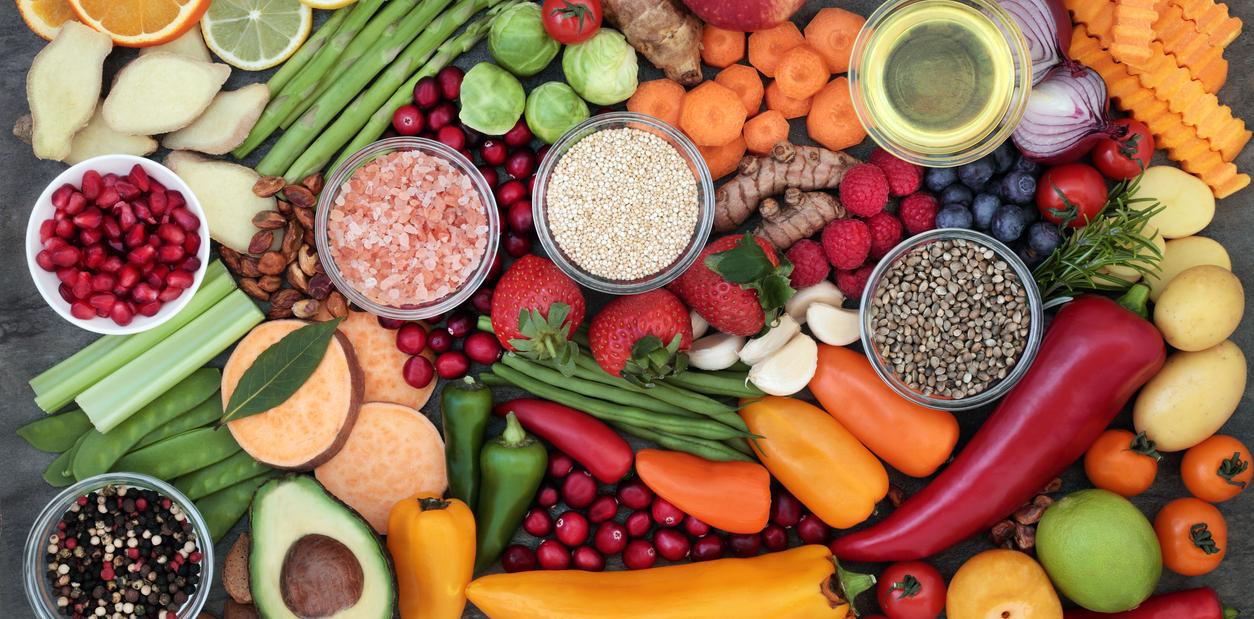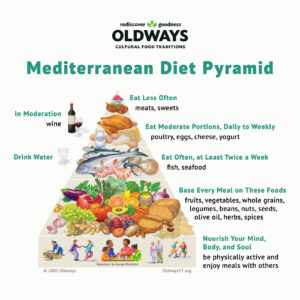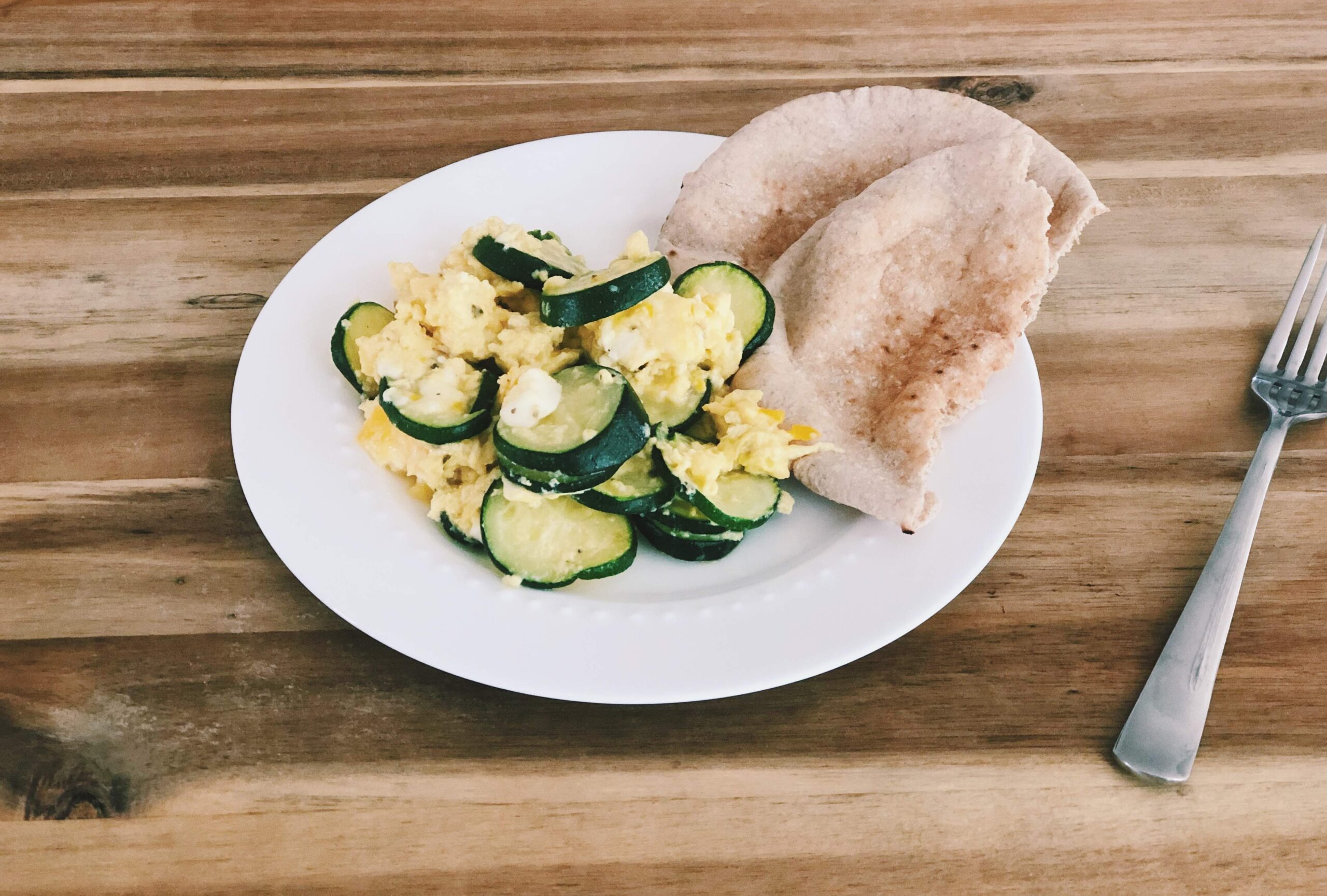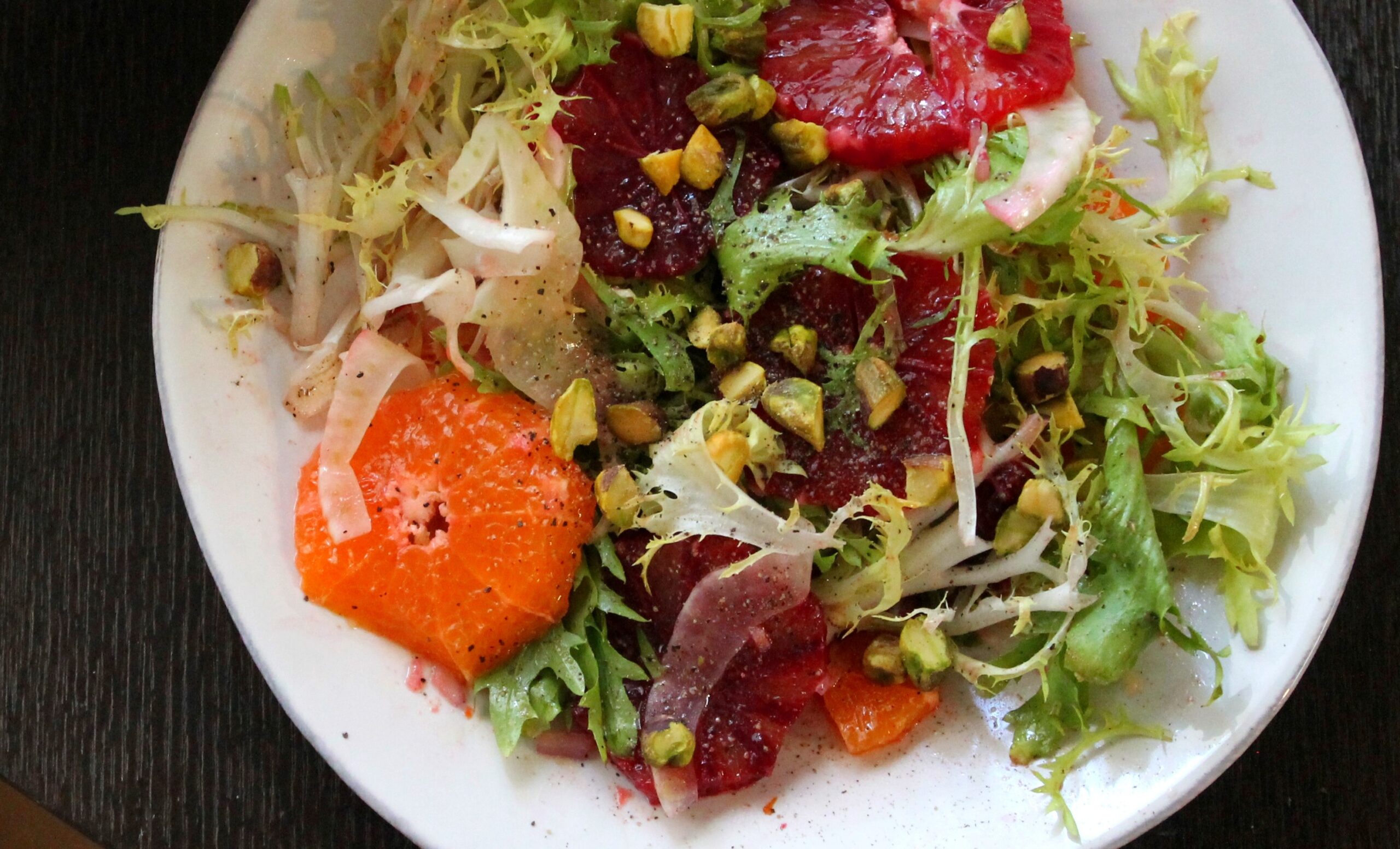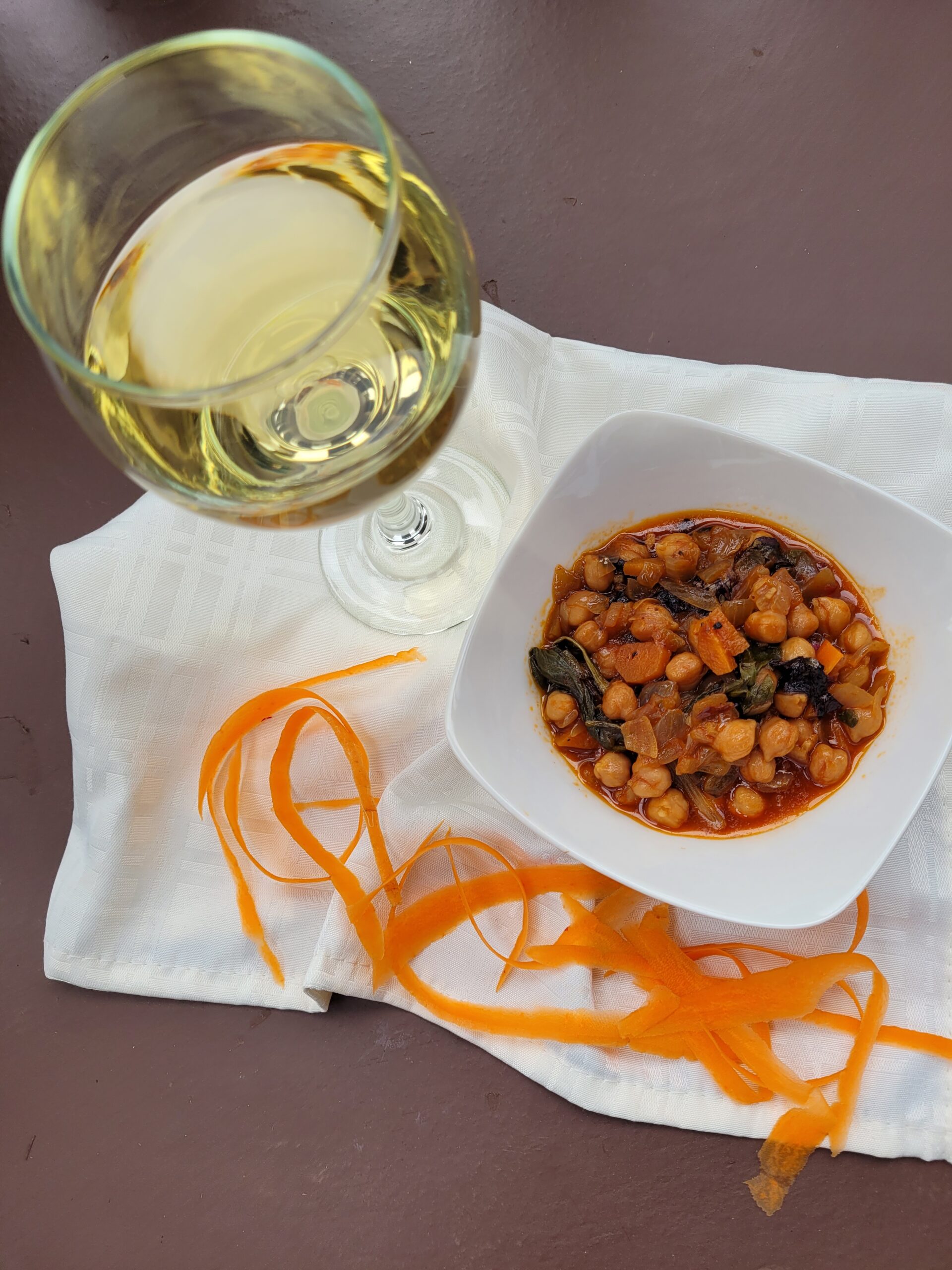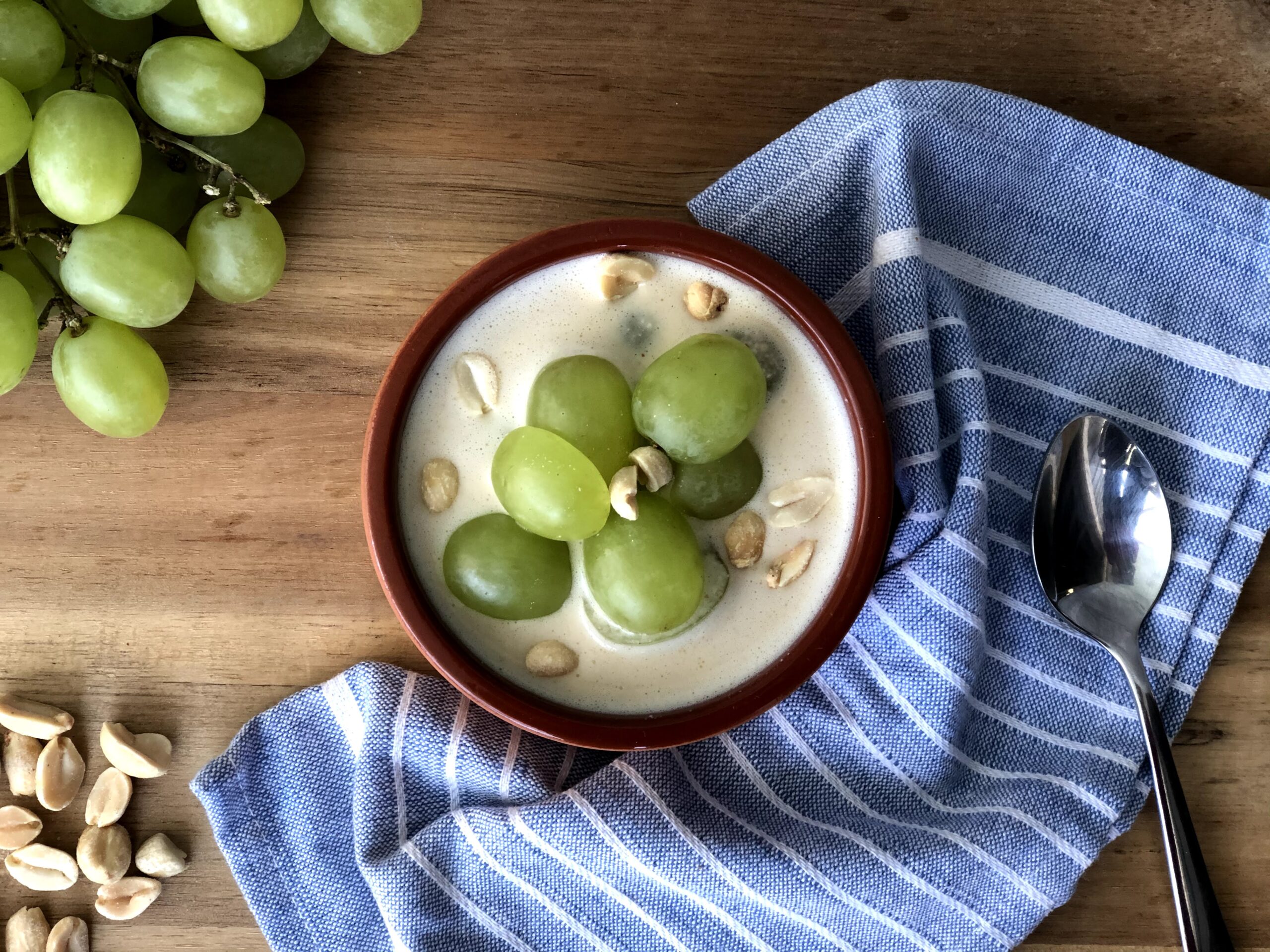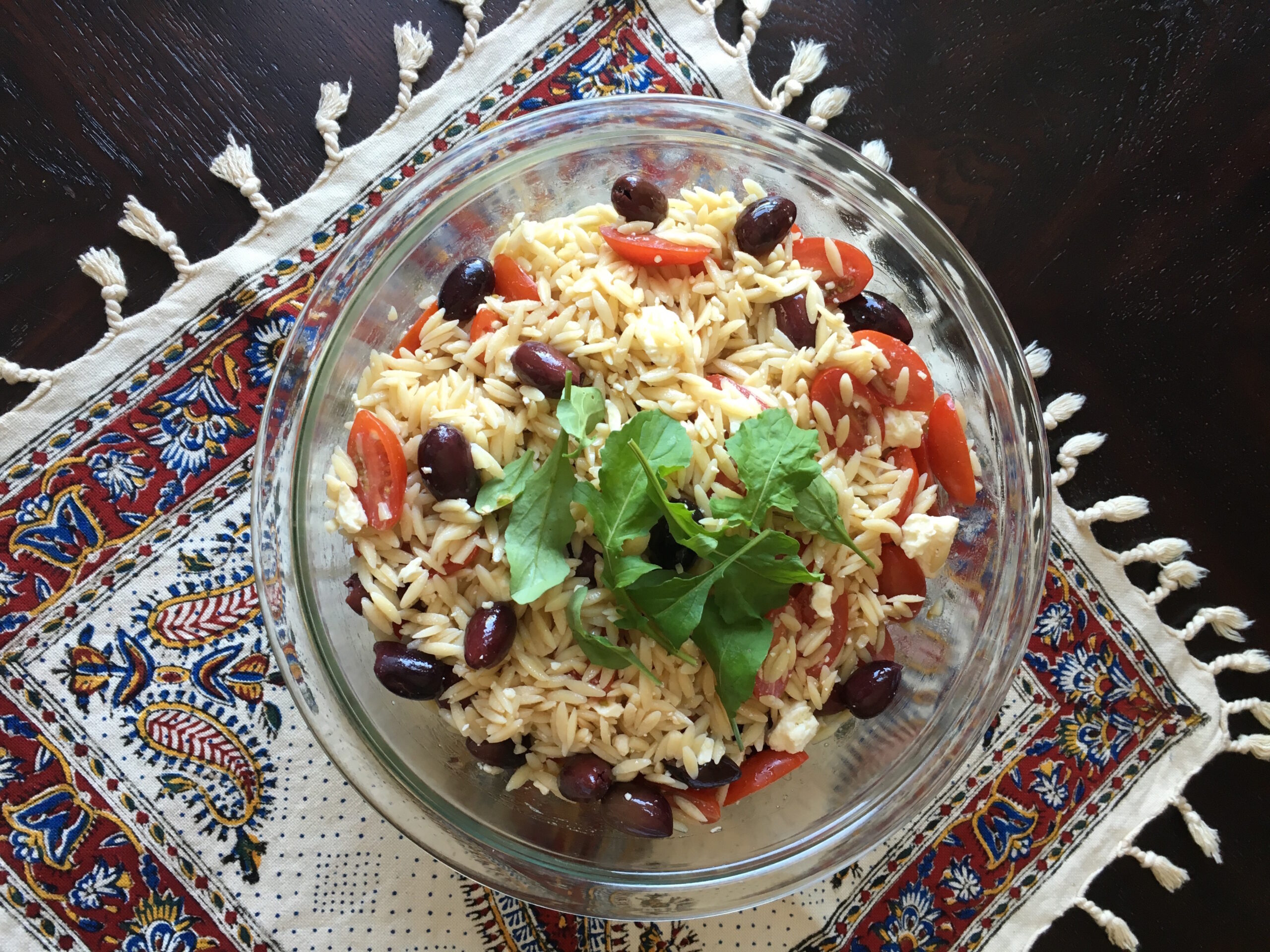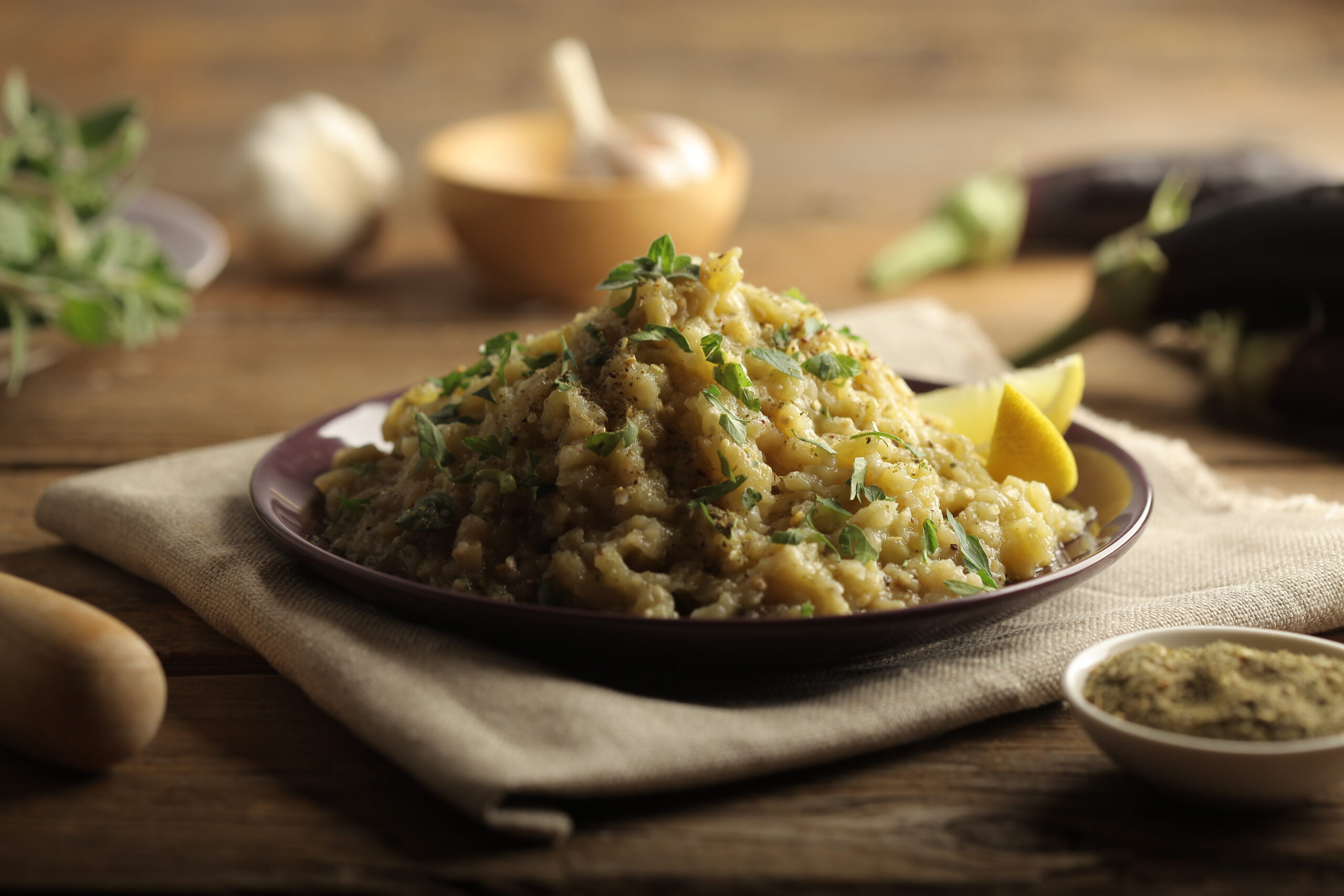The Mediterranean Diet is a plant-based diet. Long before plant-based eating became popular, the Mediterranean Diet has always been a plant-based diet, and it always will be.
Plant-based eating is important for both human health and the health of our planet. As Dr. Walter Willett, professor of epidemiology and nutrition at Harvard T.H. Chan School of Public Health and professor of medicine at Harvard Medical School, wrote in the summary report’s introduction to the EAT LANCET Commission on Healthy Diets from Sustainable Food Systems:
“Transformation to healthy diets by 2050 will require substantial dietary shifts. Global consumption of fruits, vegetables, nuts and legumes will have to double, and consumption of foods such a red meat and sugar will have to be reduced by more than 50%. A diet rich in plant-based foods and with fewer animal source foods confers both improved health and environmental benefits.”
Consumers are responding. The Hartman Group, an ethnographic research group, reports “that with half of consumers seeking “plant-based” as an attribute, the movement has clearly gone mainstream.” They also report “a growing concern about ingredients and processing levels of these products-especially plant-based meat alternatives-is sending more discerning consumers in search of simpler, purer replacements.
Look no further than the Mediterranean Diet Pyramid, and Mediterranean cuisines, dishes and ingredients that put plant-based eating squarely in the middle of anyone’s plate. Or, as Plant-Powered Dietitian Sharon Palmer puts it, “No matter what your eating style-omnivore, vegetarian, or vegan-you can take on a more Mediterranean-style diet for health benefits.”
What is plant forward cooking? To some, it means vegan or eating no animal products. To most, though, plant-forward or plant-based cooking means that plants are the predominant part of the meal or the dish. While there may be small amounts of meat, poultry, cheese or other dairy products in a dish or meal, it’s the plants that are the stars of the dish or meal. The Mediterranean Diet clearly fits that definition.
As the guidance alongside Oldways Mediterranean Diet Pyramid advises, “base every meal on these plant foods.” To help you put plants at the center of your plate, here’s a brief Mediterranean Diet tour of the plants that make this way of eating so healthy and delicious.
Whole Grains
Whole grains are an essential ingredient in plant-based eating-they are a canvas that bring all the other great plant foods together. They also provide more fiber, more protein, and higher levels of many essential nutrients than their refined counterparts. Traditional Mediterranean whole grains include lots of wheat based foods, like whole wheat pasta, whole grain flatbreads like whole wheat pita, and grains like farro, freekeh, and bulgur wheat. Whole grain corn polenta, whole grain barley rusks, and brown rice are also great ways to add whole grains to your meals.
Bulgur in Turkey: Bulgur is already pre-cooked, so it’s a wonderful solution for a quick, easy dinner. We love Ayfer’s Kisir, a simple, traditional bulgur recipe, created by Turkish food writer Ayfer Unsal, and adapted by Oleana Chef Ana Sortun for the 2012 Oldways Culinary tour in Gaziantep and Istanbul. Ana first tasted this kisir when Ayfer organized a pot luck lunch in 1996, with almost 20 home cooks from Gaziantep.
(Want to experience Turkish cuisine for yourself? Join Oldways and Chef Ana Sortun for a weeklong trip to Turkey March 20-27, 2022!)
Paella in Spain: You’ll love this Spring Pea and Peanut Paella with Brown Rice. Because of the outer bran, brown rice is less likely to clump together during cooking. This is especially advantageous for dishes like Spanish paella, where the grains should be distinct, rather than starchy or sticky. The key is to give the brown rice a little bit of a head start, partially boiling it before you begin the paella process.
Farro in Italy: While we learned about Italian Bean and Farro Soup from a chef at our Whole Grains Conference in 2011, it is a great example of how Italian cooks match farro with another great plant food-beans. The creative chef at the conference cooked everything together, then separated the broth from the vegetables, beans, and farro. We had the fun of adding hot broth to our cup o’ goodies-a great alternative to having lukewarm soup with mushy contents.
Vegetables
Along with fruits, vegetables are the food that everyone thinks of when they hear “plant foods.” There are many Mediterranean vegetables that Americans can enjoy or take inspiration from. Grain bowls, vegetable-based soups, and salads are a great way to incorporate more vegetables into your daily routine.
Greens in Italy: Orecchiette con Cime di Rape is a classic pasta dish of the southern region of Puglia, the heel of the boot of Italy. Cime di rape, or turnip tops, are the greens sold in American produce markets as broccoli di rape or broccoli rabe. This magnificent vegetable is both delicious, with a bitter bite that is extraordinarily pleasing, and nutritious, with all the remarkable properties of the cabbage family-loaded with antioxidants and other healthy things. If you are unable to find broccoli rabe, you may substitute ordinary broccoli, but the dish will lack the complex flavors that come from the combination of bitter broccoli rabe, sweet garlic, oil, salty anchovies, and pungent chile peppers. Orecchiette is the pasta shape known as “little ears,” because they resemble the shape of a small ear.
Zucchini with inspiration from Greece and Cyprus. Mediterranean Scramble with Zucchini and Halloumi is inspired by the traditional “Courgettes with Eggs” or “Kolokouthkia me t’afka” dish in Cyprus and Greece. Perhaps more traditional in Greece is Briam, a roasted vegetable dish with zucchini, tomatoes, onions and olive oil.
Eggplant in Turkey. Eggplant rollups are a great introduction to eggplant. The stuffing can change but be sure to make sure you’re including other plant foods. This recipe features a peanut stuffing with a delicious tomato sauce. More traditional is Imam bayildi, an eggplant stuffed with tomatoes, onion, peppers and herbs and spices.
Fruit
Fruits burst with flavor and nutrients and can satisfy your craving for sweets. Choose from a wide range of delicious fruits-from fresh figs and oranges to pomegranates, grapes, and apples. Dried fruits such as raisins, figs, prunes, apricots, and cherries are also very Mediterranean. Fruits are the traditional dessert in the Mediterranean and can also be incorporated into dishes for any part of the meal.
Baked fruit in all Mediterranean countries. Oldways enjoyed Parchment Baked Fruit on one of our culinary trips to Spain. Our version includes apricots, mango, peach, melon, and pomegranate seeds, but feel free to use any fruit that you wish! Dried fruit (like cranberries or apricots) also make a wonderful addition.
Dried fruit in the Eastern Mediterranean: Dried fruit and nuts can often be found nestled into Eastern Mediterranean rice pilafs. In this recipe, Brown Rice Pilaf with Golden Raisins and Almonds, golden raisins add a delicious, tangy bite to the earthy flavors of the spices and the rice.
Fruit Salads all around the Mediterranean: Watermelon, Fennel and Niçoise Olive Salad is refreshing, delicious and easy-to-make, and is your passport to summer, Mediterranean style. Watermelon is such a natural crowd-pleaser, and this recipe, an adaptation of the traditional Sicilian Blood Orange Fennel Salad, proves that it goes well with Mediterranean flavors like smoky Niçoise-Coquillo olives, fennel, and red onion.
Beans, Peas, Lentils and Chickpeas
Beans, peas, lentils and chickpeas are also known as legumes or pulses and are key in the Mediterranean Diet. Legumes provide the best source of concentrated protein in the plant kingdom, according to The Peanut Institute’s website. Beyond protein, there’s plenty of great nutrition news about legumes: legumes are high in fiber and phytonutrients, low in sodium (as long as canned legumes are fully rinsed and drained), have a low glycemic index, and for those who need to worry, legumes are gluten free.
Chickpeas in Morocco: The mint, cumin and coriander give Moroccan Bulgur and Chickpea Salad a great North African taste. You can vary the chopped vegetables to suit whatever you have on hand. Quantities don’t really matter in the salad itself; taste as you go!
Black Eyed Peas in Crete, Greece: This recipe for Mixed Greens and Tomatoes with Black-Eyed Peas from legendary Mediterranean cookbook author Paula Wolfert is her favorite recipe for greens, adapted from her book Mediterranean Grains and Greens. This recipe makes us recall fondly her trips with Oldways to Turkey, Greece, and southern Italy, where she relentlessly pursued horta, or greens, and older ladies who would show her their “old ways” of cooking them.
Chickpeas in Italy: In Tuscany, “in zimino” is a term often used to describe dishes cooked with greens and tomato. One popular choice is this version, Chickpeas Inzimino, one of the infinite variations of “beans-and-greens” found in Italy.
Gigante Beans in Greece: To make Greek-style Gigante Beans, look for bags of large white dried beans at any store that sells Mediterranean foods. Allow time to soak the beans for at least eight hours. And, once they’re cooked, freeze some for a meal down the road.
Nuts and Peanuts
As we wrote in a recent blog, Mediterranean nuts-almonds, chestnuts, hazelnuts, pine nuts, pistachios, and walnuts-and peanuts are nutrient-dense foods that offer heart-healthy unsaturated fatty acids, protein, fiber, vitamins, minerals, and polyphenols (antioxidants found in plants). To take advantage of these wonderful health benefits and the good taste of nuts and peanuts, we’ve learned to toast and sprinkle or spread nuts and peanuts on salads, yogurt, cereal, and desserts, or add them to cheese boards or appetizer plates. While it’s a great idea to toast, spread, and sprinkle, there’s a whole world (or a whole day!) of deliciousness to be enjoyed by incorporating nuts and peanuts into dishes at every meal.
Walnuts in Italy: Walnuts added to this classic Italian pasta dish, Pasta Puttanesca with Mixed Olives and Walnuts, give the dish an added boost from the polyunsaturated fat and Omega 3s in the walnuts. We created this dish as a way to Mediterraneanize five standard American dishes. This recipe, made with whole grain pasta, is hearty, healthy and delicious.
Almonds or Peanuts in Spain: Ajo blanco is a nutty, creamy chilled soup made with almonds from the Andalusia region of Spain. This recipe for Peanut Ajo Blanco is inspired by a technique that Nancy Harmon Jenkins demonstrated during the 1992 Oldways Symposium in Barcelona, Seville, and Madrid. For a twist on the original, this version uses peanuts and rustic whole grain bread.
Almonds in Greece: Island Skordalia Dip is a classic, delicious Greek dip, and is perfect as a spread, with mezes (small dish-appetizer), or as an accompaniment to a fish or meat main course.
Healthy Fats
The importance of healthy fats is key to understanding and embracing the Mediterranean Diet. No surprise, we’ve written previously with a more detailed explanation of dietary fats, including MUFAs and PUFAs in the Mediterranean Guide to Healthy Fats.
One of the hallmarks of the Mediterranean Diet is extra virgin olive oil. It’s a heart healthy fat-a “good fat”-that helps to make Mediterranean cooking so delicious. As renowned Greek nutrition scientist Antonia Trichopoulou puts it, “olive oil makes the vegetables go down.” Happily, there are also a number of other healthy “good” Mediterranean fats that also contribute to great tasting, healthy Mediterranean dishes and meals: olives, tree nuts, peanuts, fish oils, and avocados.
Basic Vinaigrette. This basic vinaigrette is a starting point for building any kind of salad dressing you can dream up. Add herbs and spices, try flavored oils and vinegars, replace vinegar with citrus juice, or experiment with different types of vinegar for endless variations. We’ve also offered some variations to get your creative juices flowing.
Olives and Olive Oil in Italy: Orzo with Feta, Olives, Tomatoes and Dill is an Italian-inspired summer dish and is not really a recipe, since all of the ingredients are added according to taste and sight. In other words, if it looks like a nice, balanced combination of all of the ingredients and it tastes great, it’s ready! Serve this with a good whole grain peasant bread, a side salad of mesclun greens in vinaigrette, and wine, and you’ve got a perfect summer lunch.
Avocado in France: A tartine is an open-faced sandwich. In this French-inspired version-Roasted Tomato and Avocado Tartine–toasted bread gets a creamy avocado spread and a sprinkling of roasted tomatoes, basil and lemon juice for boosted flavor. Serve for lunch or a savory breakfast.
Herbs and Spices
When Oldways updated the Mediterranean Diet Pyramid in 2008, the group of scientists who met made the recommendation (among others) that herbs and spices be added to it. Their reasoning? First, herbs and spices give regional expression to Mediterranean cooking. In other words, herbs and spices can make a dish Greek or Turkish or Italian, depending upon the herbs and spices used. Furthermore, using herbs and spices can also reduce the need for a lot of added salt.
Common herbs found throughout the Mediterranean include: basil, bay leaf (aka laurel leaf), chervil, chives, cilantro, dill, fennel, fenugreek, lavender, marjoram, mint, oregano (Italian, Greek), parsley, rosemary, saffron, sage, savory, tarragon and thyme. There’s definitely an herb out there to suit everyone’s taste.
Za’atar in Lebanon. Za’atar is a Middle Eastern spice blend used in many recipes, from flatbreads to grilled meats. In this recipe for Eggplant Dip with Yogurt and Za’atar, the za’atar adds an herby brightness to the eggplant and balances out the yogurt nicely.
Cumin in Morocco: This Carrot Salad is from Paula Wolfert’s award winning book, Couscous and other good Food from Morocco, was served at the final lunch at Oldways 1st Mediterranean Diet Conference in 1993.
Mint and Parlsey in Lebanon: Oldways Fattoush is a wonderful, clean-tasting salad with an incredible dressing, adapted from a recipe in The Mediterranean Diet Cookbook by Nancy Harmon Jenkins. Be sure to use both the mint and the parsley!
The Whole is Greater Than the Sum of its Parts
Now that you’ve toured the plants of the Mediterranean, it is clear that the Mediterranean magic is not each food on its own. The recipes are all combinations of a variety of plant foods. While each of these stars of the plant world is healthy, delicious and important on its own, the real power of the Mediterranean diet is-as Aristotle is quoted as saying-the whole is greater than the sum of its parts. It is the overall Mediterranean Diet.
Want biweekly Med Diet information and recipes in your Inbox? Sign up for our Fresh Fridays newsletter by clicking the Subscribe button at the bottom of this page!
Join the Make Every Day Mediterranean Club Facebook group for additional information and support.


